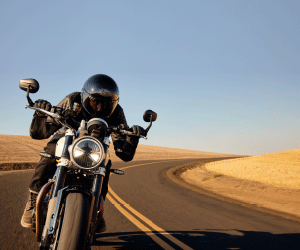KTM has been introducing models with the LC8c inline twin-cylinder engine in the mid-range segment since 2017. And shortly after, the idea gained momentum in Mattighofen to offer twin-cylinder engines in the entry-level range, in addition to the upper mid-range in the future, thus creating a complete range of engines from 125 to 1300 cc.
The initial idea to fill this space, publicly announced in 2018, was a completely new inline twin-cylinder engine, which is why a 490cc engine was developed by partner Bajaj in India, where it would also be manufactured. However, it was difficult to produce the project profitably due to the excessive complexity of the new engine and the small engine was simply too expensive for the target price. Despite years of planning, it became clear early this year that the 490 engine would not be launched on the market, despite being fully developed. But what will fill this space? Initially, there was talk of a twin-cylinder engine for the 690, but now a downsized version of the current 790 Duke engine takes its place in the model planning.

The most obvious advantage of reusing the current 790 range twin-cylinder is the use of many existing parts and consequently the reduction of development costs. This has been evident for several months in the first test bikes of a naked version, which can hardly be distinguished from the 790 Duke due to its technical proximity and good camouflage. Meanwhile, a prototype pointing towards a 650 Adventure has also been observed. Although it still has the fairing of the 790 Adventure, it is said that there is new technology under the fairing.
The most striking innovation can be found in the already finished tank. Although the 650 and 790 Adventure are closely related, the bulky and two-part tank solution of the current mid-range Adventure models will probably no longer be available in the future, so its absence is the first indication of the 650 Adventure in this prototype. Here, the engineers have also added the fairing of the recently updated 790 Adventure, which will later give way to an independent design. For example, we can expect a version of the front fairing with a 3D look, as seen in the newly presented 990 Duke and 1390 Super Duke, which will also be featured in the upcoming 390 Adventure.
KTM 650 models with 60 to 70 hp?
Beyond the differences, the technical similarities with the 790 Adventure are equally obvious: for example, the swingarm seems to have been designed almost unchanged, as well as the suspension support. The external characteristics of the engine and its surroundings also seem familiar, indicating that the reduction in displacement is the most striking innovation. It is presumed that this will be achieved through a reduction in stroke, as well as a reduction in bore. The result will be a reduced peak power, but more precise data are still speculative. We assume around 60 to 70 hp, as this is the most obvious gap in the Austrian range. With less power and less weight, less effort is needed to ensure adequate braking power, which is why in the future only one brake disc will be used on the front wheel. As initially planned, production will take place at Bajaj in India, where all future entry-level models from KTM, Husqvarna, and GasGas will be produced.
The 650 models are not yet ready for serial production, but due to the basis of known engines, the production models could be officially presented as early as autumn 2024. We remain curious and will keep you updated.











